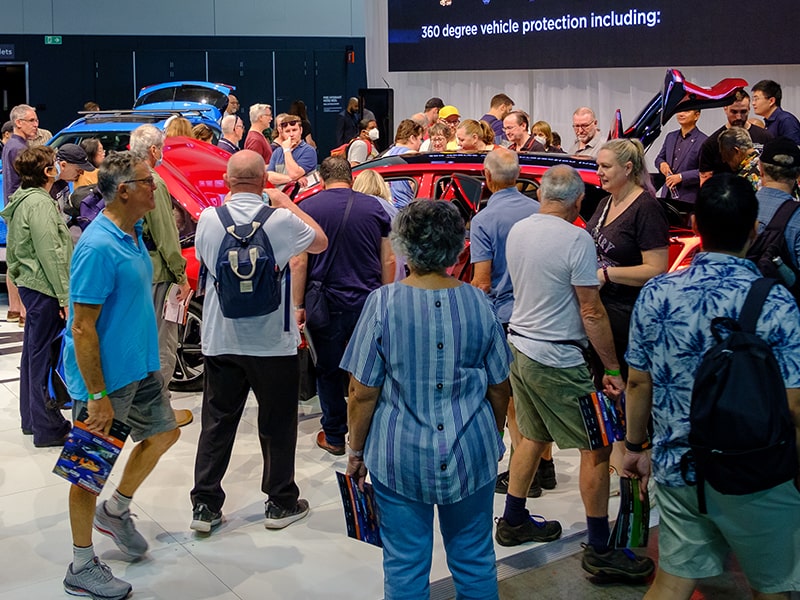Yeah , but what about all the other panelists?
I wish Saul Griffiths would tone down the 'che guevara' a bit. When he starts taking a out total manual weight..
The mix of panellists is a tricky one for the organisers. It looked to me like the more popular sessions were with those that had a higher Youtube / journalist / "celebrity" profile - particularly with Robert Llewellyn attending - which makes perfect sense. The sessions with industry experts, consumers are less familiar with those people, and without the celebrity drawing power I'd expect them to have had smaller audiences. I don't want to comment on the knowledge of specific Youtubers to audience questions as I didn't witness that myself, suffice to say that they need to market themselves and their channel as a number one priority and some may not have as much lived EV ownership experience as you might expect nor have they actually attended EV displays / drive days etc where you get any and all questions from the public.
For a first up effort getting speakers on the other side of the globe, I think the UK-based organisers had a tough task and did a great job. Can't fault the topic selection at all. They'll get feedback on which panellists attendees liked and didn't like and leverage that in 2024. Meanwhile they're also juggling organising 5 more events this year. Kudos to them.
Being on the panel for the V2G session (I run a retail energy pricing business with V2X hands-on experience using an Ioniq 5 leveraging Amber market-linked pricing and automation software), it's difficult to keep it real/practical/simple for many attendees who don't even own an EV whilst also divulging what's actually possible to do now, soon and how the financials actually can stack up, which is what the average attendee wants to know.
Interesting.. obviously the way CHAdeMO has gone and I assume Tim would be on top of it. My understanding is the CCS standards allow AC or DC, and obviously the Korean manufacturers (and reportedly Tesla) have gotten 2-way chargers in the car working.
For a home with solar it makes sense to have some form of centralised two-way inverter, (DC inputs from solar and car, DC outputs to battery and car, and AC outputs to house and maybe grid) though suspect it's going to mean purchasing a new inverter and possibly expensive cabling if the meter/ inverter is on the other side to the garage.
But I would have thought AC might make sense (and would be much cheaper) in commercial settings. (Eg. Say a factory/office where the workplace provides free/cheap daytime charging on the quid pro quo they can redraw power in the late afternoon until the employee goes home to minimise peak grid usage)
It seems to me that most actually working on V2G believe that DC V2G will win out over AC. From a technical purist perspective they're likely right as adding in high power AC bidirectional capability adds expense to every V2G capable EV when more than 50% of EV owners will probably never use it.
All the EVs with V2L obviously have AC bidirectionality and Hyundai V2G trials in the Netherlands are bidirectional AC. However presumably they're limited to just 16A single phase export. That's probably fine for budget EVs but isn't sufficient to power a fully electric home.
Feels like Beta v VHS. AC bidirectionality may get some early wins because the costs are lower when you can use existing off-the shelf dual AC input hybrid inverters for well under $5k to power your home and/or top up a smaller stationary battery. You can't generate meaningful income from V2G if you can only export at a rate of 2-3kW to the grid (after household consumption).
Economies of scale will get the DC bidirectional charger pricing down fairly quickly so will likely be the choice for those who really want to use their EV to power their home and make some dollars on the side exporting to the grid. Those stations should be 7kW to 22kW. The sort of power you need to profit from the narrow periods when you get paid handsomely for helping the grid.
Our home makes
over $900 a month with Amber leveraging a two-way network tariff trial in Ausgrid using ~100kWh of batteries. Whiile that's mostly stationary storage, if your EV was capable of 22kW of output, credits in the hundreds per month would certainly be possible if you're in the right location and have the right kit.



